Key Takeaways
1. Aspire to Excellence in Programming
In order to become an excellent programmer, you must first want to become an excellent programmer.
Desire is Fundamental. The journey to becoming an excellent programmer begins with a genuine desire for self-improvement. No amount of training or education can transform someone who lacks the intrinsic motivation to excel. This passion fuels the dedication required to master the craft.
Embrace Continuous Improvement. Excellence in programming is not a destination but a continuous journey. It requires a willingness to learn, adapt, and refine one's skills. This mindset fosters a growth-oriented approach, where challenges are viewed as opportunities for development.
Cultivate a Growth Mindset. To foster this desire, encourage exploration, celebrate small wins, and emphasize the enjoyment of skill development. By focusing on the intrinsic rewards of programming, individuals are more likely to cultivate a lasting passion for excellence.
2. Embrace the Engineer's Mindset
I can solve this problem the right way.
Belief in Optimal Solutions. Every engineer should approach challenges with the conviction that a correct solution exists and is attainable. This mindset drives a commitment to finding the most effective and sustainable approach, even when faced with complexity.
Resource Constraints as the Only Limitation. While resource limitations may necessitate compromises, the ideal solution should always be the guiding principle. This ensures that even temporary solutions are implemented with a clear understanding of the desired end state.
Avoid Invalid Excuses. The engineer's mindset rejects excuses such as lack of knowledge, disagreement within the group, or temporary fatigue. Instead, it encourages seeking knowledge, assigning responsibility for decision-making, and prioritizing mental clarity for effective problem-solving.
3. Understanding Drives Programming Mastery
The better you understand what you are doing, the better you will do it.
Understanding as the Key Differentiator. "Rockstar" programmers distinguish themselves through a profound understanding of their craft. This deep comprehension enables them to quickly grasp new concepts, architect elegant systems, and solve complex problems with ease.
Continuous Learning and Simplification. The path to programming mastery involves a continuous cycle of learning and simplification. By mastering the fundamentals, one can more easily grasp advanced concepts, leading to a deeper understanding of the entire field.
Apply Knowledge Effectively. The true test of understanding lies in its application. Excellent programmers demonstrate their mastery by creating well-architected systems, efficiently solving problems, and clearly explaining complex concepts in simple terms.
4. Prioritize Maintainability Over Implementation
It is more important to reduce the Effort of Maintenance than it is to reduce the Effort of Implementation.
Long-Term Vision. Software design should prioritize long-term maintainability over short-term implementation speed. This approach recognizes that the cost of maintaining complex systems far outweighs the initial effort of creating them.
Complexity as the Enemy. The effort required to maintain software is directly proportional to its complexity. By striving for simplicity in design, developers can significantly reduce the burden of future maintenance and modifications.
Strategic Trade-offs. While rapid implementation may seem appealing, it often leads to increased complexity and long-term costs. Prioritizing maintainability ensures that the software remains adaptable and manageable throughout its lifecycle.
5. Simplicity Through Strictness and Design
The stricter your application is, the simpler it is to write.
Strictness Reduces Complexity. Applications that enforce strict input validation and adhere to well-defined standards are inherently simpler to develop. This approach minimizes ambiguity and reduces the need for complex error handling.
Usability vs. Complexity Trade-off. While strictness can simplify development, it may also impact usability. Finding the right balance between strictness and user-friendliness is crucial for creating effective and enjoyable software.
Design for the Future. By prioritizing simplicity and adhering to sound design principles, developers can create systems that are easier to understand, maintain, and adapt to future requirements. This approach minimizes the risk of accumulating technical debt and ensures the long-term viability of the software.
6. Debugging: Data-Driven Problem Solving
Debugging is accomplished by gathering data until you understand the cause of the problem.
Embrace the Unknown. Effective debugging begins with acknowledging that the cause of the problem is not yet known. This mindset encourages a systematic approach to gathering information and avoiding premature assumptions.
Data-Driven Investigation. Debugging is a process of gathering and analyzing data to identify the root cause of a problem. This involves examining logs, monitoring system behavior, and comparing the observed data to the expected behavior of a working system.
Focus on the Root Cause. The goal of debugging is not simply to eliminate the symptoms of a problem but to identify and resolve its underlying cause. This ensures that the problem is permanently fixed and will not resurface in the future.
7. Cultivate Kindness in Code and Collaboration
There is no value to being cruel to other people in the development community.
Software is a Human Endeavor. Software engineering is fundamentally a human discipline, where collaboration, communication, and understanding are essential for success. Treating colleagues with kindness and respect fosters a positive and productive work environment.
Constructive Feedback. When providing feedback on code, focus on the code itself rather than attacking the developer. Offer specific suggestions for improvement and emphasize the importance of clarity and maintainability.
Empathy and Understanding. Recognize that everyone makes mistakes and that learning is a continuous process. Be understanding of others' perspectives and offer support and guidance when needed.
8. Measure Productivity by Delivered Value
The way to measure the productivity of a developer is to measure the product that they produce.
Focus on Tangible Outcomes. Developer productivity should be measured by the value they deliver to users, not by arbitrary metrics like lines of code. This approach encourages a focus on creating useful and impactful software.
Align Metrics with User Needs. Identify the specific ways in which the software helps users achieve their goals and measure the success of those outcomes. This ensures that developers are focused on creating features that truly benefit the users.
Consider Multiple Metrics. A comprehensive assessment of developer productivity may involve multiple metrics that capture different aspects of their contributions. However, all metrics should ultimately be tied to the value delivered to the users.
9. Refactor for Features, Not Just for Cleanup
When you clean up code, you are always doing it in the service of the product.
Purpose-Driven Refactoring. Refactoring should always be driven by a specific goal, such as implementing a new feature or improving the maintainability of a frequently modified area of code. This ensures that the refactoring effort is aligned with the overall product roadmap.
Incremental Improvement. Refactoring should be approached incrementally, with small, focused changes that are tested and validated along the way. This minimizes the risk of introducing new bugs and ensures that the refactoring effort remains manageable.
Clarity as a Guiding Principle. The ultimate goal of refactoring is to improve the clarity and understandability of the code. This makes it easier for other developers to maintain and extend the software in the future.
10. Technology Solves Material, Not Human Problems
When technology attempts to solve problems of matter, energy, space, or time, it is successful. When it attempts to solve human problems of the mind, communication, ability, etc. it fails or backfires dangerously.
Focus on Physical Solutions. Technology is most effective when addressing problems related to the physical world, such as improving communication, transportation, or energy efficiency. These solutions often have tangible and measurable benefits.
Beware of Human-Centric Solutions. Attempts to solve complex human problems with technology often lead to unintended consequences. For example, social media platforms, while connecting people, can also exacerbate issues like addiction and misinformation.
Strategic Application. When developing new technologies, carefully consider the types of problems they are best suited to solve. Prioritize solutions that address material challenges and avoid over-reliance on technology to solve inherently human issues.
11. Privacy: Balancing Help and Harm
An individual or group desires privacy of information because they believe that other people knowing that information could or would be more harmful than them not knowing it.
Privacy as Risk Mitigation. The desire for privacy stems from a rational assessment of the potential harm that could result from others knowing certain information. This harm can range from financial loss to physical danger.
Informed Consent and Control. Users should have control over their personal information and be informed about how it is being used. This empowers them to make informed decisions about their privacy and mitigate potential risks.
Context-Specific Assessment. The appropriate level of privacy depends on the specific context and the potential risks and benefits involved. A balanced approach is needed to ensure that privacy is protected without hindering the functionality and usefulness of the software.
12. Open Source: Kindness, Access, and Retention
All you have to do to succeed as a software project is to suck less with every release.
Community Growth Pillars. Building and maintaining a thriving open-source community requires a focus on three key areas: attracting new contributors, removing barriers to entry, and retaining existing contributors.
Prioritize Retention. Before focusing on attracting new contributors, ensure that the project has a welcoming and supportive environment that encourages existing contributors to stay involved. This creates a stable foundation for future growth.
Remove Barriers to Entry. Make it easy for new contributors to get started by providing clear documentation, communication channels, and a list of beginner-friendly tasks. This lowers the barrier to entry and encourages more people to participate.
Last updated:
Review Summary
Understanding Software receives mixed reviews, with an average rating of 3.58/5. Readers appreciate its accessible writing style and philosophical approach to software development principles. Some find it valuable for early-career developers, praising insights on code simplicity, team management, and user-centric design. Critics argue it lacks depth, describing it as a hastily compiled collection of blog posts. While some reviewers highlight useful nuggets of information, others find the content shallow and outdated. The book's conversational tone and focus on general software practices garner both praise and criticism.
Similar Books
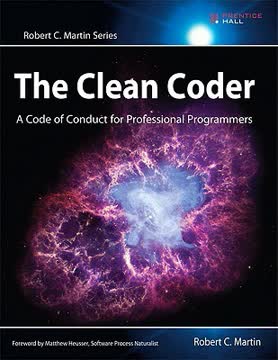
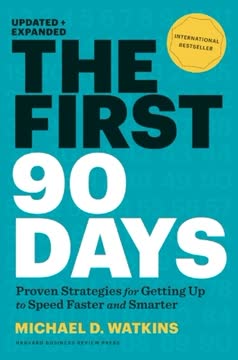
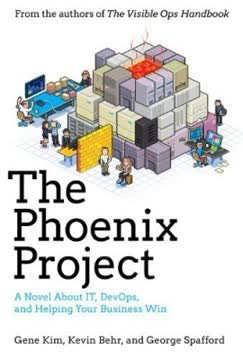

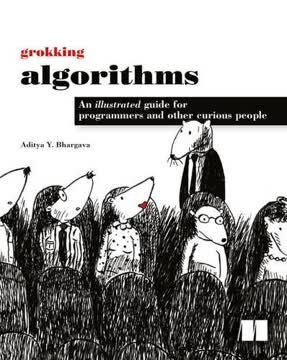

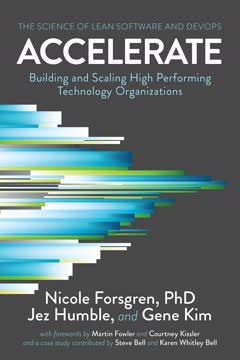



Download PDF
Download EPUB
.epub digital book format is ideal for reading ebooks on phones, tablets, and e-readers.




